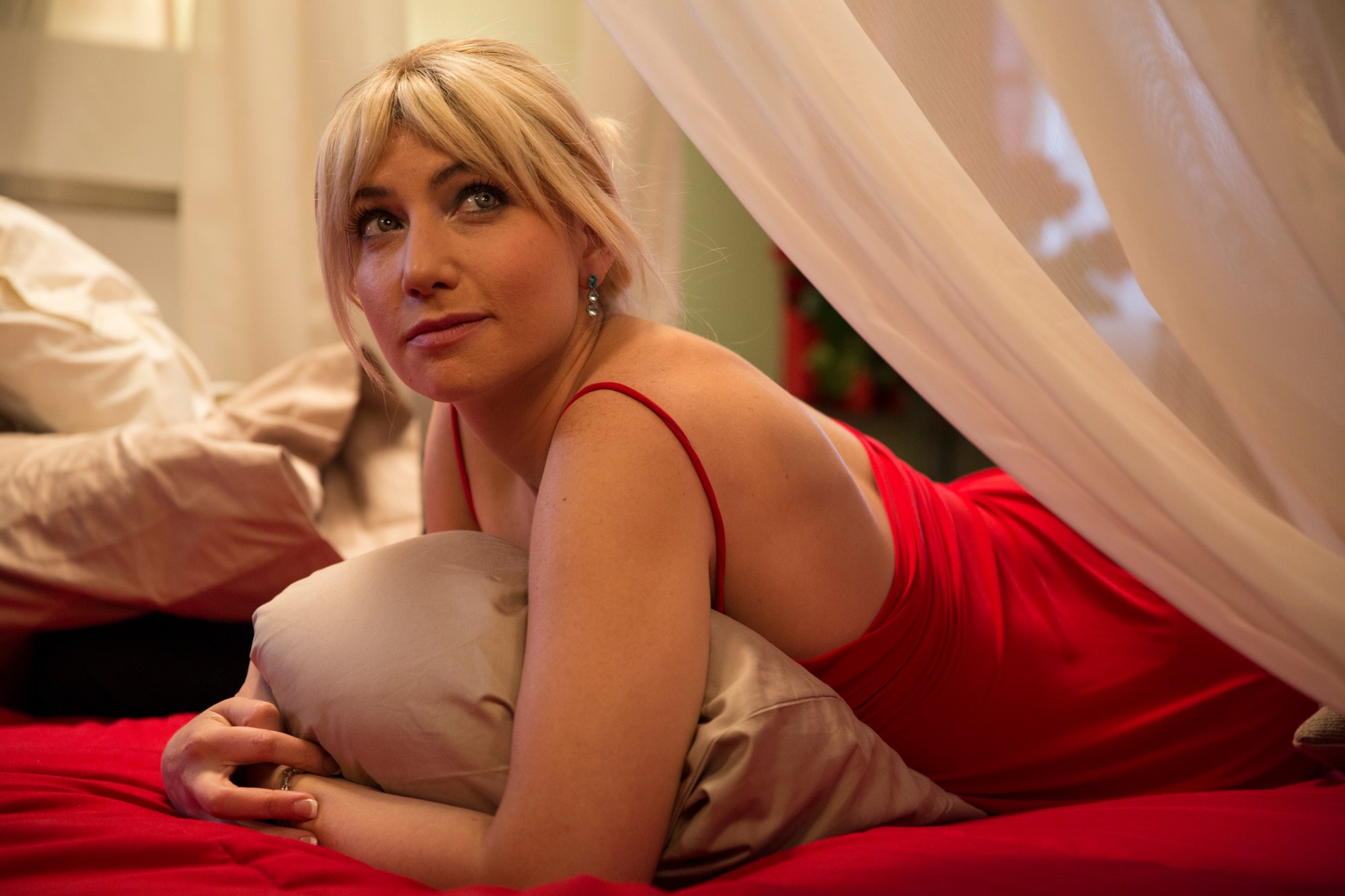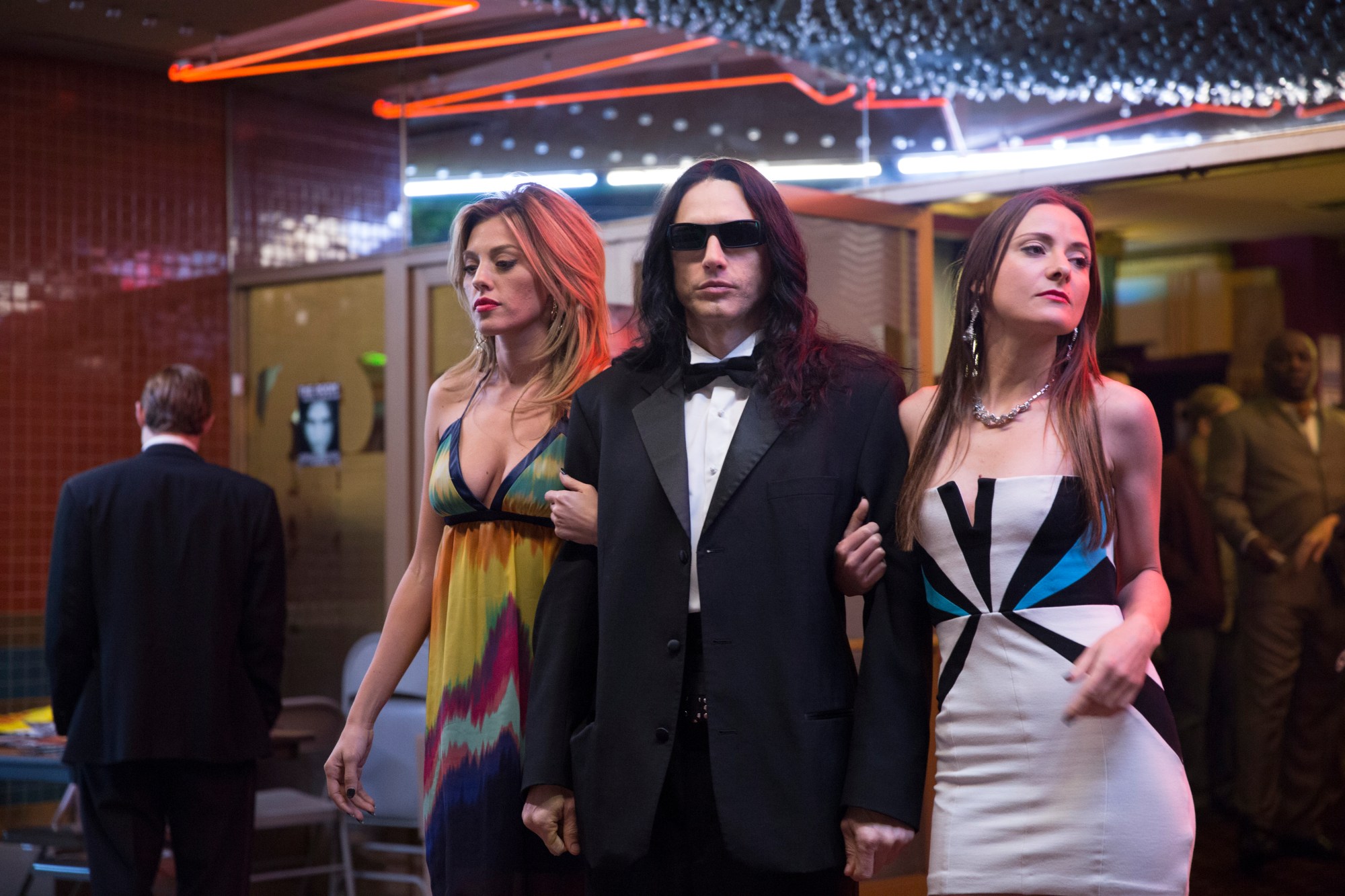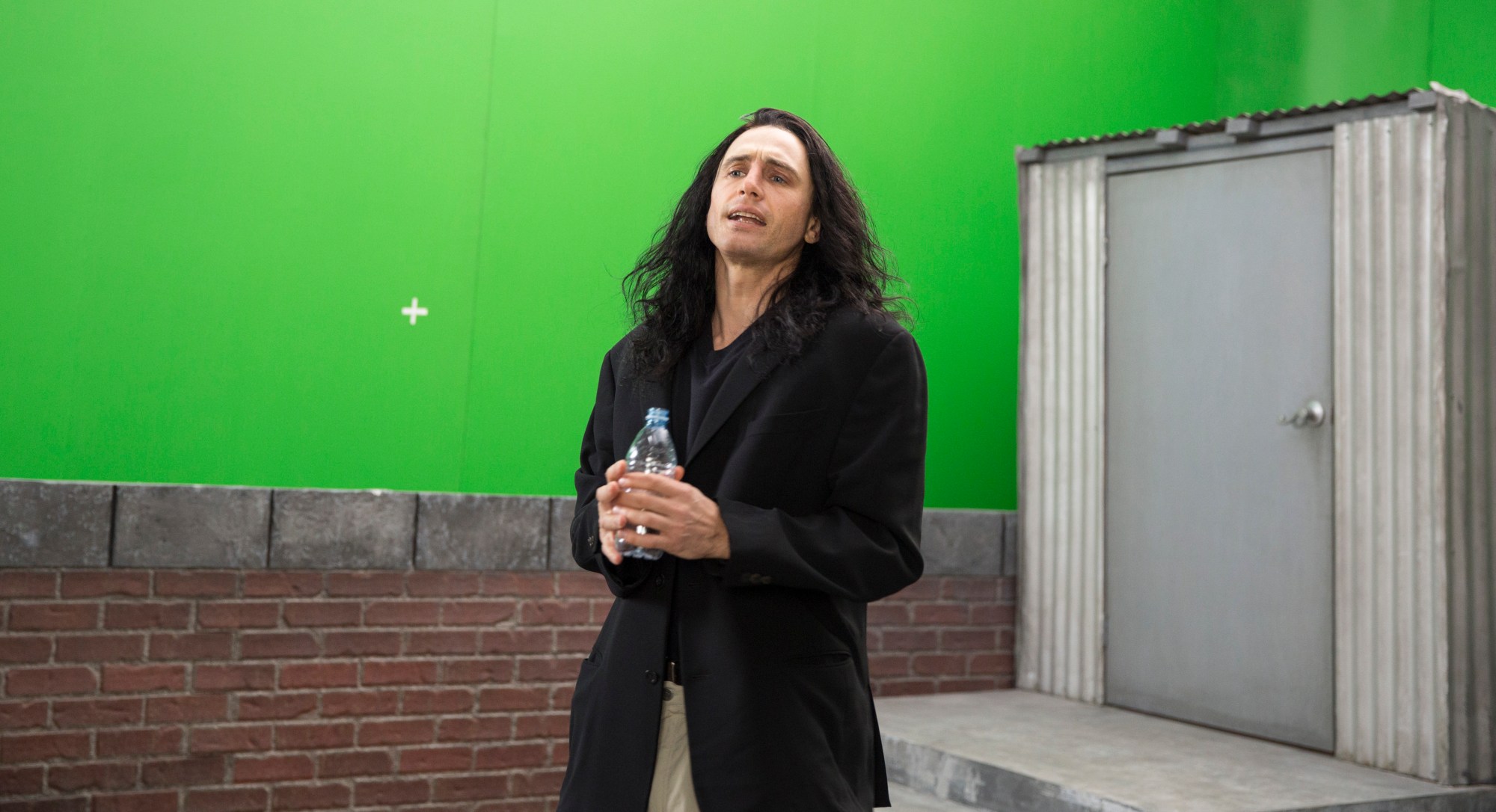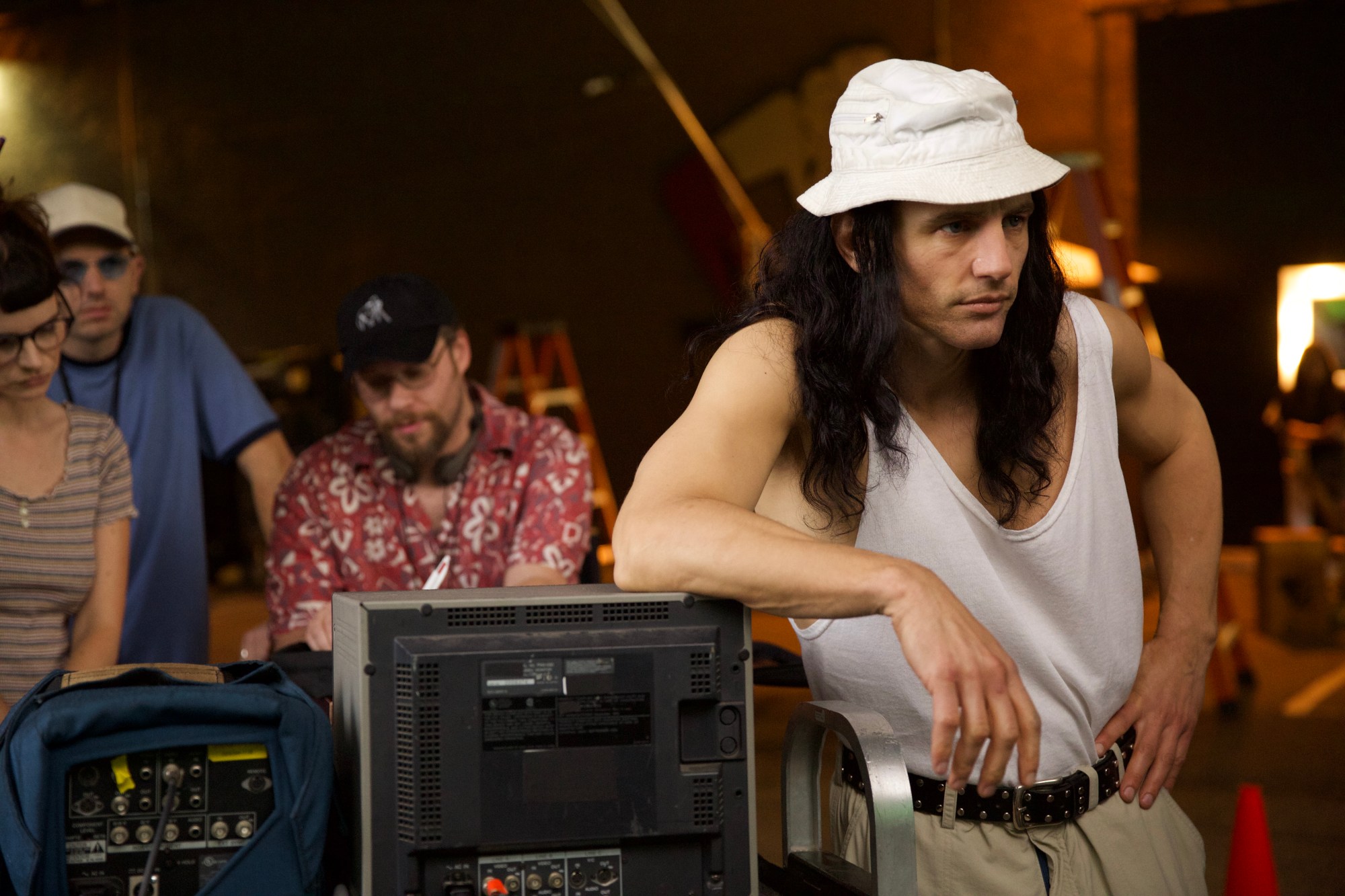“This can’t be what he’s making,’” Brenda Abbandandolo thought after her inaugural viewing of The Room. James Franco had just approached the costume designer about a new movie based on Tommy Wiseau’s legendary cinematic atrocity. “At that time,” Brenda recalls, “James was directing his Faulkner film and translations of poetry.”
Brenda had been working with James for years, so she was used to his esoteric ideas. But The Disaster Artist — a film based on a book about the making of what is widely considered to be the worst movie ever made — is not as cryptic as it sounds. The film is not a satire — it’s a love letter to Tommy Wiseau’s beloved train wreck and the ragtag cast of wannabes who brought it to life. “These were people who kind of missed the mark in general,” Brenda says. “[Tommy] wasn’t getting successful working actors, he was getting people who would do a film like this, which is in no way disparaging. The story is about the outsiders who needed this film.”
Like the plot and cinematography, everything about The Room’s costumes is slightly off in a strangely appealing way. The garish outfits are now more famous than the original actors. Fans show up to midnight screenings in Lisa’s red dress, or belt-heavy homages to Tommy. The Room is estimated to have cost $6 million to make, and it’s doubtful much of that money was spent on costumes. Brenda did try to obtain the original pieces. But she soon learned from Greg Sistero — who plays Tommy’s friend Mark in The Room and has a small cameo in The Disaster Artist — that this was probably a lost cause. Most of the costumes in The Room are the actors’ own clothes, and most of the costumes in The Disaster Artist are therefore replicas, from the iconic red dress to the graceless bucket hat Tommy wore while directing.
Tommy also has a cameo in The Disaster Artist. So how did Brenda score with the delightfully eccentric Room creator? “He said there were some things I got right, but he usually does a few more belts.”
How did you go about recreating Tommy Wiseau’s iconic look?
Greg Sistero was this crazy resource for me. The Tommy we know, with the tie and the vest, is the Tommy post-The Room. But I had all this access to photos and videos that Greg gave us from before and during The Room. I was trying to figure out a timeline for Tommy’s style, because it kind of changed over time. James was really clear that he wanted it to be true to something Tommy would wear. But we definitely took liberties while fleshing out his story from when Tommy first met Greg up until they made The Room. We tried to pay homage to who he was at the time. It was so much fun. It’s Tommy, right? He has this crazy, really eclectic, kick-ass style. There was so much range for what we could do, and I took it.

Were you aware that Tommy is also a fashion designer ?
Oh yeah, definitely.
Did you use any authentic Tommy Wiseau designs in the film?
We didn’t use any actual Tommy stuff. We were trying to get some of the actual Room costume pieces, but I never managed to get in touch with the original costume designer. We were unsure about what Tommy would actually give us. We had to move forward not counting on that, and actually go ahead and create it. I was aware of [his fashion label] though. In a weird way, I almost had too much information about who he was.
Did he have much say in the costumes? There are videos of him on YouTube hosting The Room costume contests, so he clearly knows they are important to the fans.
He was in the film for a scene with James, so I had to costume him as someone other than himself. He had a lot of opinions about what he wanted to look like for that. But he didn’t have any say in the costumes I put on James as Tommy. I did talk to him about the costumes in his fittings. I asked about about the styles and how he came up with them. He was really vague and ambiguous, like it was a secret and he didn’t want to give out too much information.

There is one scene where the costume assistant is frantically, and unsuccessfully, trying to get Tommy to get into his outfit. What was the vibe actually like on set?
That’s so funny. Obviously no one was yelling at me or anything like that. James would never do that. But it was insane, it was pretty fast and furious. We shot The Room [scenes] first, and I think when it became clear how close we were getting to the actual movie, we just wanted to film more and more of the actual scenes. So there were costumes that I hadn’t planned on creating that we were adding. We were constantly making new clothes every day and putting new scenes together really quickly. It felt at times like we really were recreating the calamity of The Room.
There are a lot of looks in the film that are very representative of the early 2000s, particularly the vests and the bucket hat. The lurid denim is very of that era. Do you see the film as a product of that period or does it transcend time?
We definitely tried to stay true to the period. Greg gave me so many reference photos and six hours of behind-the-scenes footage of them shooting The Room. So I knew what Tommy was shooting while he was directing. I could tell what the cast was wearing even when they weren’t on camera. We tried to be as accurate with those looks as possible. That look with the bucket hat and the white tank top — that was a replication of Tommy directing the actual movie. Everything was pretty period, and all the actors really wanted it to be period. Ari [Graynor, who plays Lisa] wanted to really channel the actual actress being on set and coming in for the audition. It was all Rocket Dogs and crazy shit. The crazier it got, everyone was more and more on board. Those details helped define who those people were.

I love that. It’s funny though, The Disaster Artist is coming out at a time when those looks are actually pretty cool.
Yeah, for sure. Everything comes back around. But I do think maybe Tommy is some genius. He just sort of fell into the zeitgeist. I have mad respect for him for being his own man. The Disaster Artist is a great story of sticking to your voice and it will find it’s way. It’s kind of cool.
Tell me about Lisa’s red dress. That’s another look the fans really feel a connection to.
I knew we weren’t going to find the original. Like I said, I reached out to the original costume designer, but I had kind of guessed from talking to Greg that a lot of the costumes in The Room were the actors’ own clothes. I didn’t really expect that we would be able to trace the dress back to the designer and get an old season or anything like that. We built a lot of Ari’s clothes from scratch because they were just so specific.
The Disaster Artist is really cameo-heavy in such a clever way. How did you approach those scenes?
All the characters were real people — Sharon Stone played the real Iris Burton, and she was super into the character development. She really went with me. Melanie [Griffith] was the same way. They’re all such interesting people and somethings they’re such character types that you’re like, “Is this iconic actress going to let me take them with me to this very character-driven place?” They all did. Even Bob Odenkirk.
What about Angelyne, the L.A. billboard queen? She must have worn her own clothing in that scene.
Yeah, she did, totally. We kind of worked around her. We wanted her as she was. No one could do it better than her. That’s what we wanted, and that’s what we got. We had a great time with her. [Her scene] is like an homage to Los Angeles.
